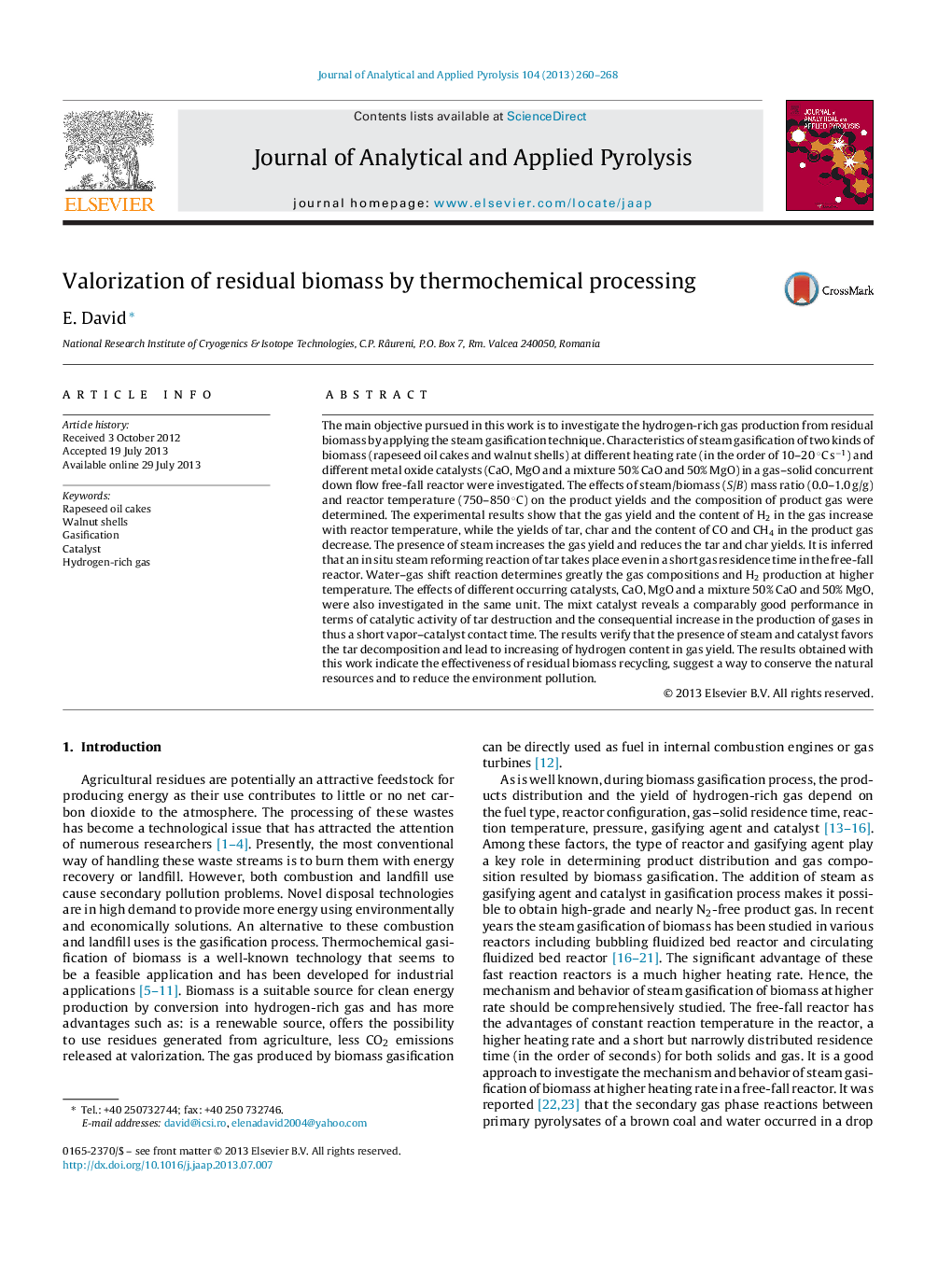| کد مقاله | کد نشریه | سال انتشار | مقاله انگلیسی | نسخه تمام متن |
|---|---|---|---|---|
| 1196787 | 1492973 | 2013 | 9 صفحه PDF | دانلود رایگان |

• Rapeseed oil cakes and walnut shells were employed as raw materials.
• Characteristics of steam gasification with metal oxide catalysts were investigated.
• Gas, liquid and solid yields and their compositions were determined.
• By applying the steam gasification technique hydrogen-rich gas was obtained.
The main objective pursued in this work is to investigate the hydrogen-rich gas production from residual biomass by applying the steam gasification technique. Characteristics of steam gasification of two kinds of biomass (rapeseed oil cakes and walnut shells) at different heating rate (in the order of 10–20 °C s−1) and different metal oxide catalysts (CaO, MgO and a mixture 50% CaO and 50% MgO) in a gas–solid concurrent down flow free-fall reactor were investigated. The effects of steam/biomass (S/B) mass ratio (0.0–1.0 g/g) and reactor temperature (750–850 °C) on the product yields and the composition of product gas were determined. The experimental results show that the gas yield and the content of H2 in the gas increase with reactor temperature, while the yields of tar, char and the content of CO and CH4 in the product gas decrease. The presence of steam increases the gas yield and reduces the tar and char yields. It is inferred that an in situ steam reforming reaction of tar takes place even in a short gas residence time in the free-fall reactor. Water–gas shift reaction determines greatly the gas compositions and H2 production at higher temperature. The effects of different occurring catalysts, CaO, MgO and a mixture 50% CaO and 50% MgO, were also investigated in the same unit. The mixt catalyst reveals a comparably good performance in terms of catalytic activity of tar destruction and the consequential increase in the production of gases in thus a short vapor–catalyst contact time. The results verify that the presence of steam and catalyst favors the tar decomposition and lead to increasing of hydrogen content in gas yield. The results obtained with this work indicate the effectiveness of residual biomass recycling, suggest a way to conserve the natural resources and to reduce the environment pollution.
Journal: Journal of Analytical and Applied Pyrolysis - Volume 104, November 2013, Pages 260–268